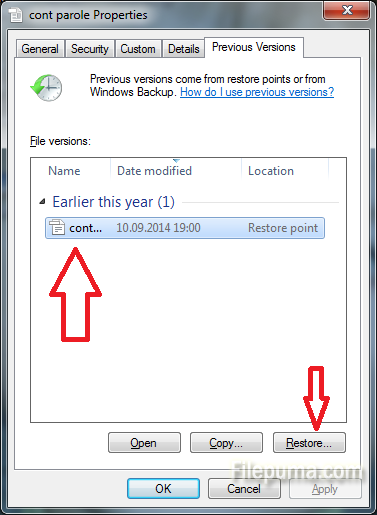


How To Access “My Documents” In Windows 10 File Explorer.How To Remove “Frequent Folders” and/or “Recent Files” From “Quick access”.How To “Unpin” File Explorer Items To “Quick access”.How To “Pin” File Explorer Items To “Quick access”.How To Customize “Quick access” In Windows 10 File Explorer.Windows 10 File Explorer Keyboard Shortcuts.Windows 10 File Explorer “View” Ribbon Explained.Windows 10 File Explorer “Share” Ribbon Explained.Windows 10 File Explorer “Home” Ribbon Explained.Windows 10 File Explorer Ribbons Explained.Open File Explorer By Right-clicking Start Menu.Different Ways To Open File Explorer In Windows 10.For large files like games and 3D movies, you can choose 32 or 64 KB cluster size. Usually, the typical cluster size of a drive is 4 KB. When you set a larger cluster size for disk, and you have a large number of files, more space will be wasted. Along with the size on disk, it also depends on the cluster size of your file system. These situations occur when there are lots of small files in a folder. This size of wasted drive space keeps on adding and reaches a certain level at that stage, the size on disk will be much larger than the actual size. This difference will increase with the increase in the number of files because each file will waste the storage space of the drive. When it comes to the considerable difference between size vs size on disk, you can check if there are lots of small files inside the folder and cluster size is large. The file system of your storage drive set different cluster sizes that affect the size on disk.
#Windows 10 file details Pc
When you are a Windows PC user, the operating system allocates disk space for cluster units. What are the reasons for a large difference between Size and Size on Disk?Ī hard disk consists of sectors and tracks. So, let’s try to find out the reason why there is a massive difference between the two. There isn’t a vast difference between the size and size on disk, however many users have claimed that a significant difference between the actual file size and size on disk exists. This feature compresses the file so the size on the disk will be smaller than the actual file size. Remember, it will happen only when you are using the automatic compression feature that you get from your operating system. Sometimes you may get surprised as well, but it will be an exception.įor example, you may encounter a situation is which size on disk will be smaller or equal to actual file size. Now, it’s clear that the size of a file on disk will be bigger than the actual file size. Similarly, when you save the 1 KB file in the file system of 32 KB clusters, it will actually take up 32 KB on the disk. For example, the size of a file is 1 KB, but you save it in a file system of 2 KB clusters, it will take up 2 KB size on disk. It doesn’t matter how small the actual file size is because when a file is written on the hard drive, it occupies a discrete number of clusters. Usually, in the NFTS file system, the cluster sizes range from 512 Bytes to 64 KB. For example, the maximum file size supported by the FAT32 file system is 4,294,967,295 bytes. The capacity of file size not only decided by the maximum size of a file, but it is also determined by the number of bits reserved for the information of file size. A file uses different addresses and to reduce this file system treats the number of files as a single cluster. Obviously, it depends on how your file system stores file on the storage drive. Now the question that comes in our minds is what factors affect this file size on disk. Why is there a difference between Size and Size on Disk


 0 kommentar(er)
0 kommentar(er)
